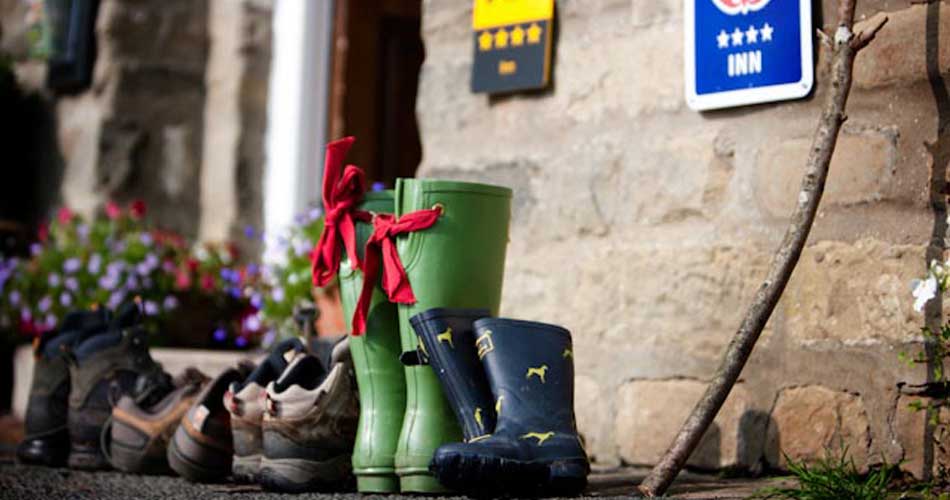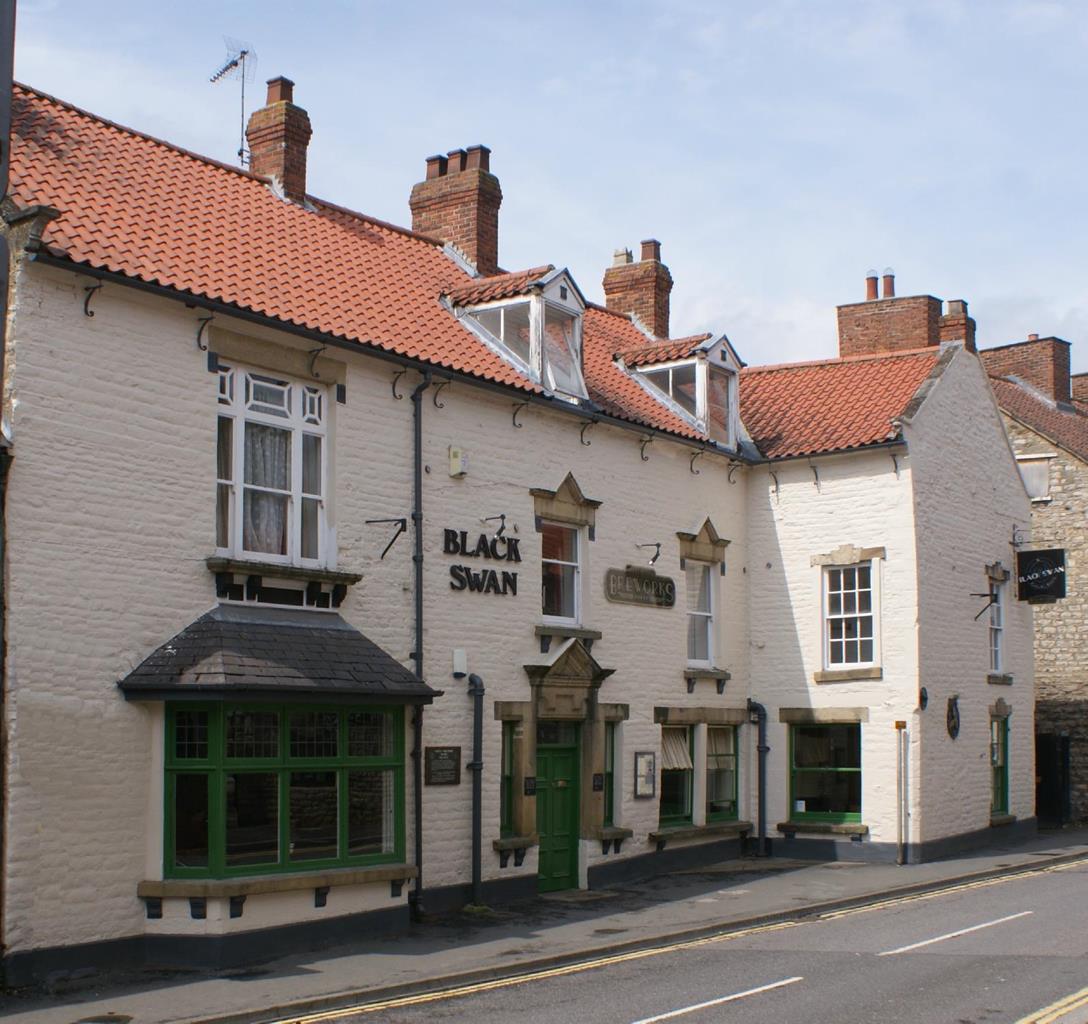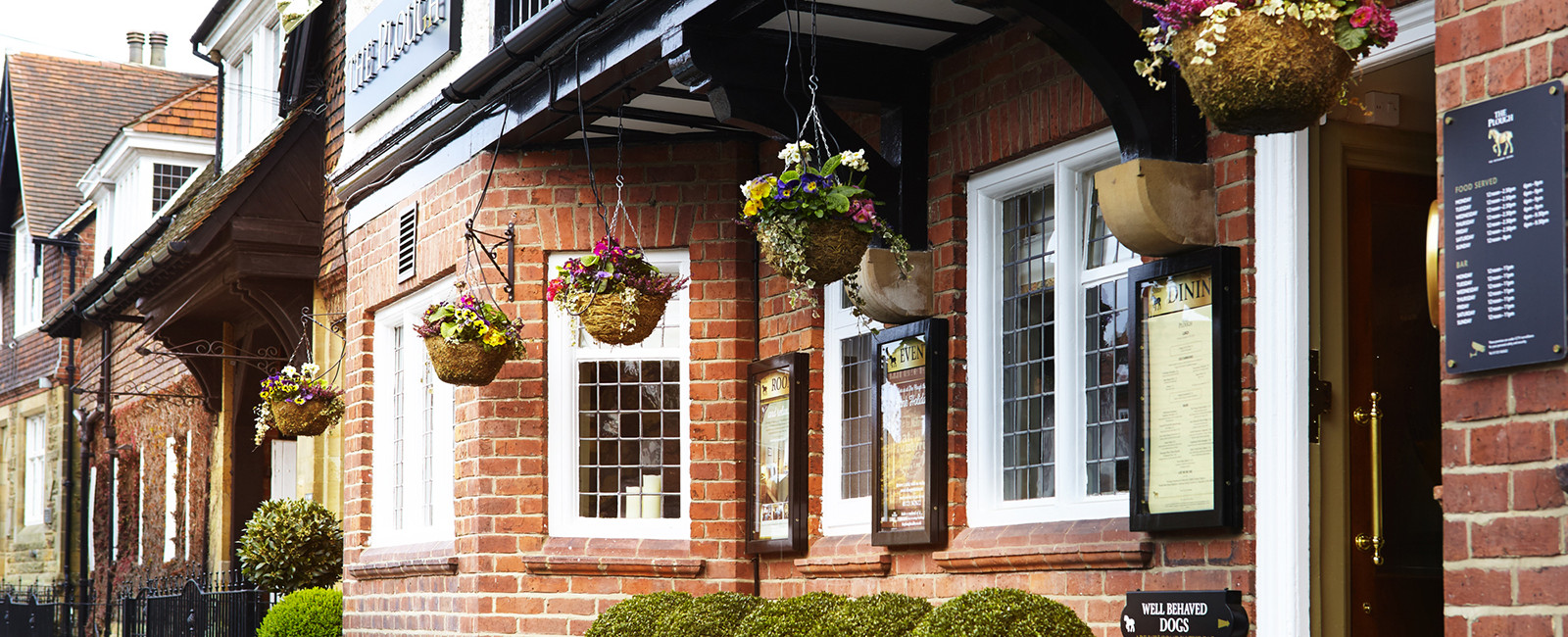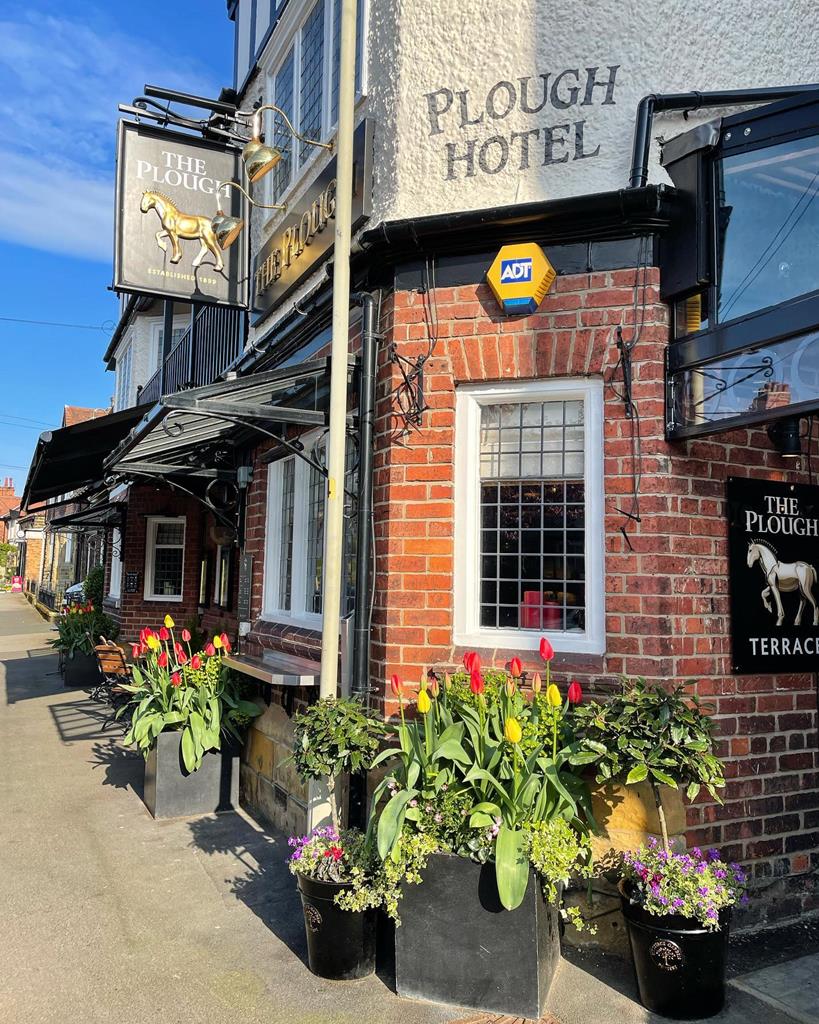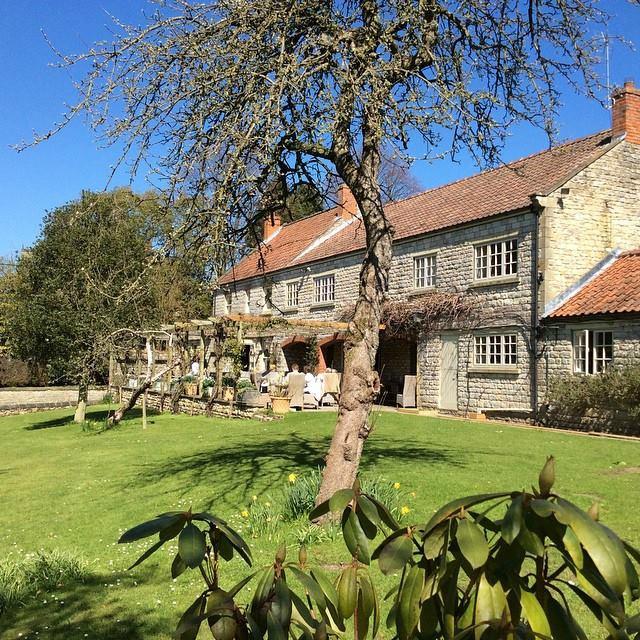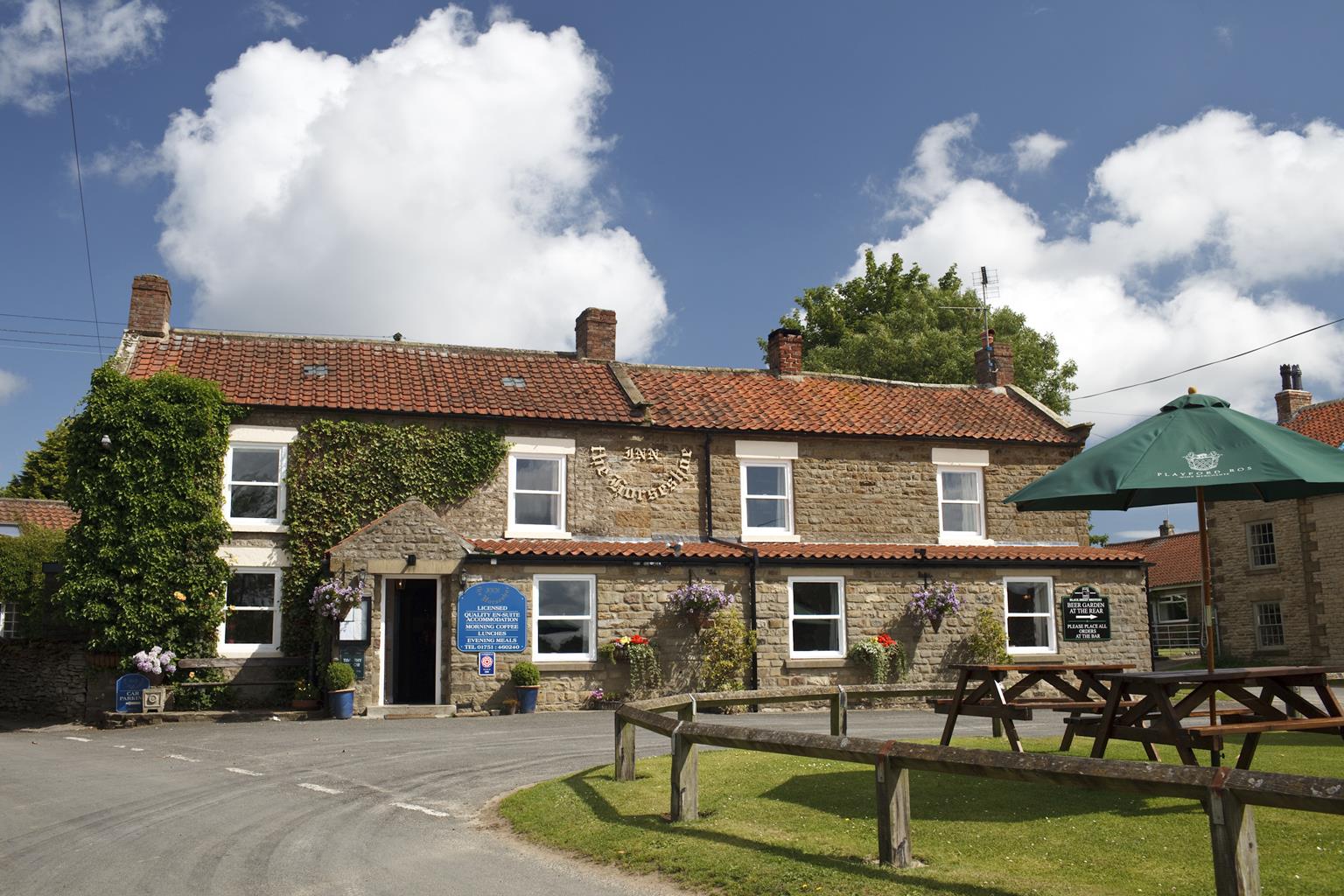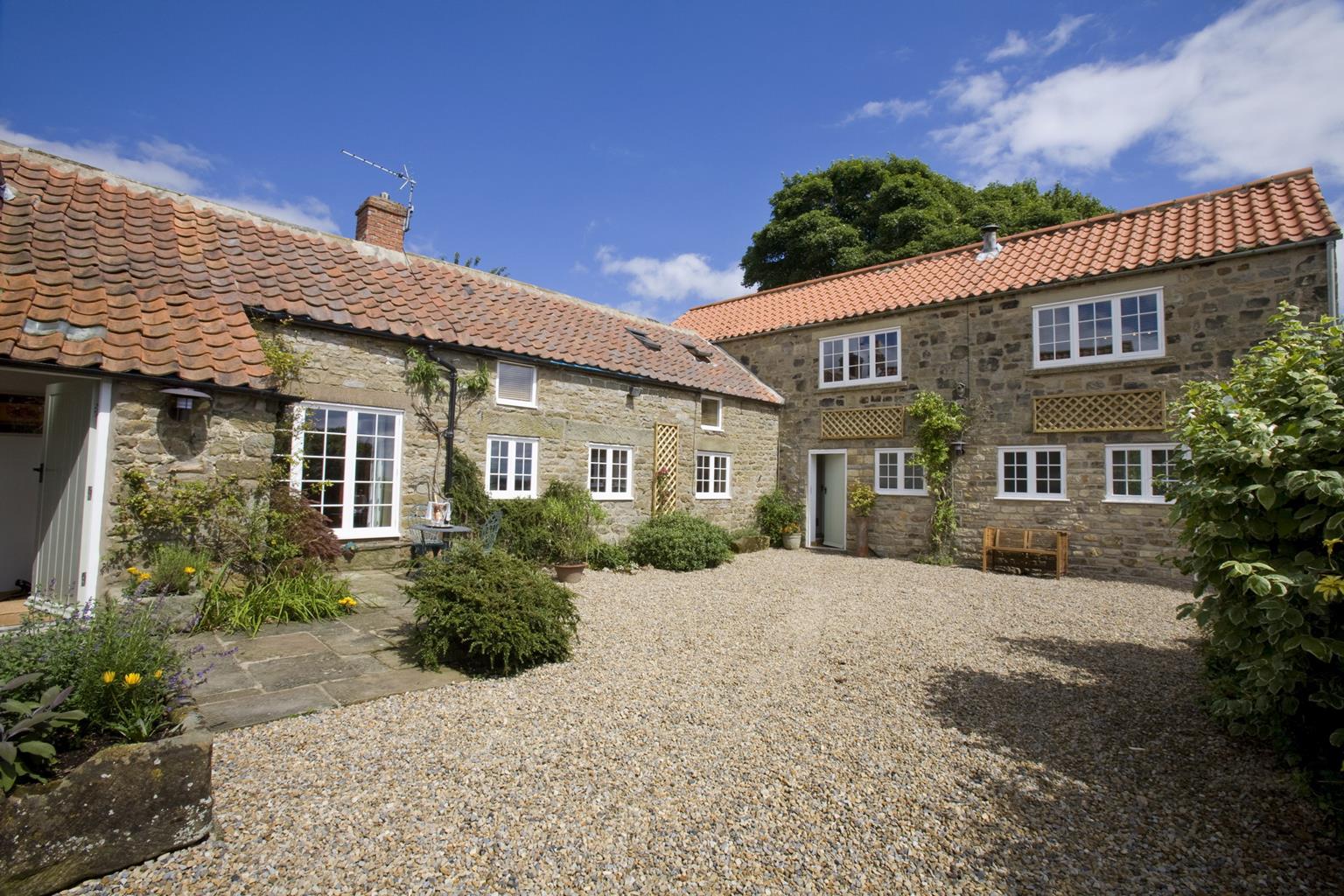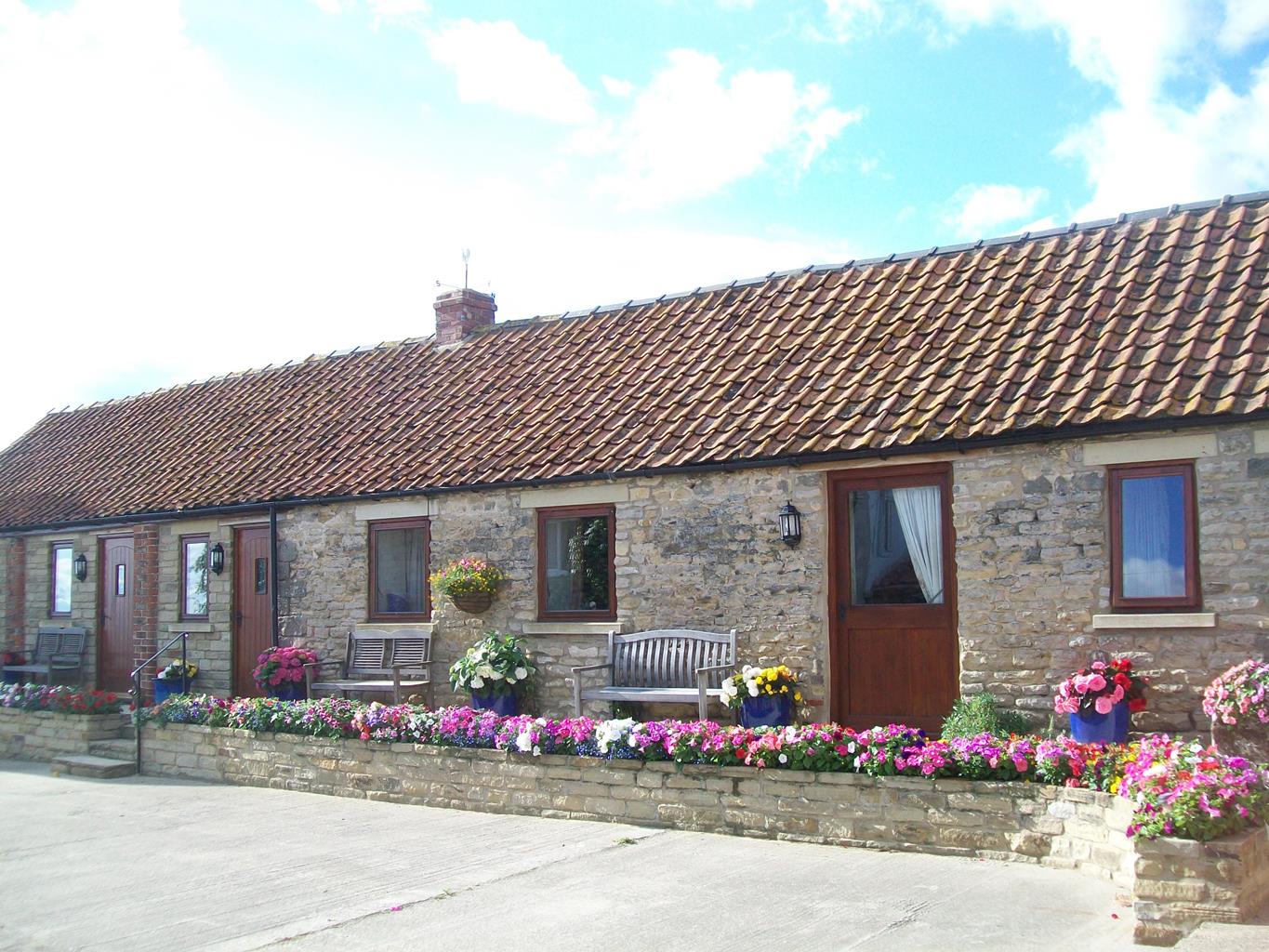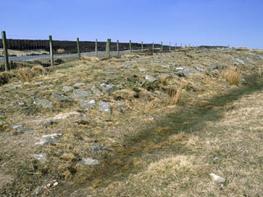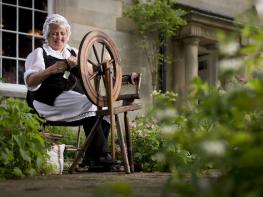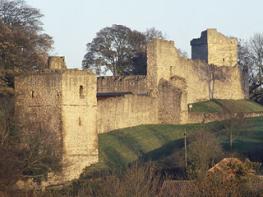The Horseshoe Inn is a charming 19th-century property with a peaceful location in Levisham. The…
Levisham and Newton Dale

Exploring a wooded valley and sweeping moorland skies – and you could arrive here by steam train.
3 miles (4.8kms)
About the walk
If timetables allow it, there’s no better way to arrive for this walk than by a steam train on the North Yorkshire Moors Railway. Early stages of the walk run through the valley near the line, and later on there’s a fine view from Skelton Tower over the upper reaches of Newton Dale, where the line traverses what many feel to be its most scenic section. This is more than just a convenient railway walk, however, climbing out of the valley onto open moors with far reaching views.
The NYMR is one of the longest established heritage railways in the UK. The line began as the Whitby & Pickering Railway and opened in 1836. The company was absorbed several times by successively larger companies, culminating in the formation of the London and North Eastern Railway in 1923, prior to nationalisation in 1948. The line was one of the many victims of Dr Beeching, whose report for the government in 1963 recommended widespread railway closures – some would say this was a shortsighted measure for which we are still paying the price today. The Whitby & Pickering line closed in 1965, but almost immediately an active group of local people was formed to try and revive the line. Fortunately, most of the infrastructure remained in place, and the line between Grosmont and Pickering reopened in 1975. Its 18-mile (29km) length makes it the second-longest heritage railway in the country. The NYMR also runs some trains through to Whitby, a total distance of 24 miles (39km).
The NYMR operates several trains daily between late March and the end of October, and at weekends for most of the rest of the year. The company owns more than 20 steam locomotives, some of which are undergoing restoration or repair. The main locomotive base is at Grosmont, but there is an informative visitor centre at Pickering.
It’s very tempting, when youngsters need a little encouragement, to tell them they are heading for Skeleton, rather than Skelton, Tower. The name would be apt for this gaunt ruin with its gaping window holes, which stands so evocatively above a steep slope overlooking the curve of upper Newton Dale. It’s generally agreed that it was built around 1850 for the vicar of Levisham, the Revd Robert Skelton, but there are varying accounts of the uses he found for it. Some say he used it as an overnight lodge when shooting on the moors, some that he found inspiration here when writing sermons. Others suggest that he primarily enjoyed the tower as a place where he could have a drink or two in peace. While the tower feels remote, it’s less than 2 miles (3.2km) on good tracks from Levisham’s vicarage, a distance that would have seemed slight to a country vicar used to walking or riding all over his extensive parish.
Walk directions
Walk up the road to a footpath sign on the right, and turn down a green path to cross a stream before rejoining the road lower down. Continue, with the road levelling out across a cattle grid before arriving at Levisham Station.
Continue across the level crossing and follow the dirt track beyond, which soon turns back to tarmac. Follow this track for 0.75 miles (1.2km) to a footpath sign on the left, which points right.
Go down steps, across a footbridge, and then keep left for a short way to reach a gate. Cross the railway to another gate. Climb a rough path slanting to the right up a steep slope, keeping just left of a wood. At a waymarked post the path swings back left and keeps climbing to a gate, and on to open, level moor.
Turn left along the edge of the moor, then continue alongside a wall enclosing trees. Loop right to avoid a wire fence and sheep pens, then continue parallel to the wall until it bends left down the slope. Continue on a level path along the brink of the slope, with great views over Newton Dale, to reach Skelton Tower.
Turn sharp right on a green path running away from the edge of the slope. Keep ahead to cross another green path and go uphill. The track curves right to maintain a gentle gradient up the slope.
At the top the main track bends away left, but a smaller path continues ahead along the brink of the slope. Follow this path along the edge for about 400yds (366m) until another track comes in from the left. Bear slightly right to a narrow path down the slope. It’s a little rough but never too steep. As the slope eases turn downhill back to the start.
Additional information
Tarmac lane and track, and well defined moorland paths; may be boggy between Points 3 and 4
Sheltered wooded valley and open moorland
Dogs on leads – sheep, game birds and some road walking
OS Explorer OL27 North York Moors, Eastern Area
Roadside parking at big bend in the lane above Levisham Station
Levisham Station
WALKING IN SAFETY
Read our tips to look after yourself and the environment when following this walk.
Find out more
Also in the area
About the area
Discover North Yorkshire
North Yorkshire, with its two National Parks and two designated Areas of Outstanding Natural Beauty, is England’s largest county and one of the most rural. This is prime walking country, from the heather-clad heights of the North York Moors to the limestone country that is so typical of the Yorkshire Dales – a place of contrasts and discoveries, of history and legend.
The coastline offers its own treasures, from the fishing villages of Staithes and Robin Hood Bay to Scarborough, one time Regency spa and Victorian bathing resort. In the 1890s, the quaint but bustling town of Whitby provided inspiration for Bram Stoker, who set much of his novel, Dracula, in the town. Wizarding enthusiasts head to the village of Goathland, which is the setting for the Hogwarts Express stop at Hogsmeade station in the Harry Potter films.
York is a city of immense historical significance. It was capital of the British province under the Romans in AD 71, a Viking settlement in the 10th century, and in the Middle Ages its prosperity depended on the wool trade. Its city walls date from the 14th century and are among the finest in Europe. However, the gothic Minster, built between 1220 and 1470, is York’s crowning glory.
Nearby stays
Restaurants and Pubs
Nearby experiences
Recommended things to do
Why choose Rated Trips?
Your trusted guide to rated places across the UK
The best coverage
Discover more than 15,000 professionally rated places to stay, eat and visit from across the UK and Ireland.
Quality assured
Choose a place to stay safe in the knowledge that it has been expertly assessed by trained assessors.
Plan your next trip
Search by location or the type of place you're visiting to find your next ideal holiday experience.
Travel inspiration
Read our articles, city guides and recommended things to do for inspiration. We're here to help you explore the UK.

